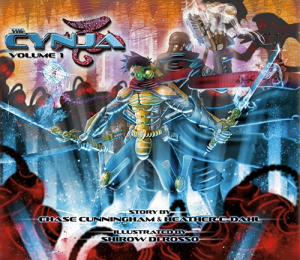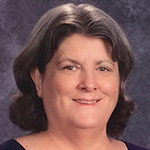Stories are an entertaining way to introduce or reinforce computer science concepts and help students to understand abstract concepts in a more concrete way. Do you read picture books, chapter books, or short stories to your students in computer science classes? I do. The easiest way to get started is with books that are specifically written to teach CS concepts.
 For 5-8-year-olds, Hello Ruby: Adventures in Coding by Linda Liukas is a wonderful place to start. Written to introduce young children to computing, it is a picture book about a “small girl with a huge imagination.” As Ruby goes on adventures, students learn about planning, sequences, algorithms, collaboration, conditionals, loops, and more. The book includes activities that go along with the story, and the official website has resources for educators. Linda Liukas has also written a second book, Hello Ruby: Journey Inside the Computer, which includes activities about the internal parts of a computer.
For 5-8-year-olds, Hello Ruby: Adventures in Coding by Linda Liukas is a wonderful place to start. Written to introduce young children to computing, it is a picture book about a “small girl with a huge imagination.” As Ruby goes on adventures, students learn about planning, sequences, algorithms, collaboration, conditionals, loops, and more. The book includes activities that go along with the story, and the official website has resources for educators. Linda Liukas has also written a second book, Hello Ruby: Journey Inside the Computer, which includes activities about the internal parts of a computer.
 A graphic novel for 8-12-year-olds that covers multiple CS concepts is Secret Coders by Gene Luen Yang and Mike Holmes. It is the first in a series of books that combine logic puzzles and coding (in Logo) wrapped up in a mystery storyline. The official website has downloadable activities and Logo instruction videos so your students can code along with the characters if desired. Check out the excerpt on the website for a fun introduction to binary. The concepts in the book can easily be applied to any programming language you are using with your students.
A graphic novel for 8-12-year-olds that covers multiple CS concepts is Secret Coders by Gene Luen Yang and Mike Holmes. It is the first in a series of books that combine logic puzzles and coding (in Logo) wrapped up in a mystery storyline. The official website has downloadable activities and Logo instruction videos so your students can code along with the characters if desired. Check out the excerpt on the website for a fun introduction to binary. The concepts in the book can easily be applied to any programming language you are using with your students.

The comic book, The Cynja, by Chase Cunningham, Heather C. Dahl, and Shirow Di Rosso was written for younger children, but I like it for introducing Networks and Cybersecurity for Middle School students. The Cynja is a story of a battle between the evil forces of cyberspace and the Cynsei and his apprentice, the Cynja. Code of the Cynja, the second comic in the series, has a female lead character. These are difficult to get in print, but digital versions are available on Amazon and in the Google Play Store.
Don’t limit yourself just to books written about computer science concepts. Working on decomposition skills? Read a “Choose Your Own Adventure” book. Then work with students to decompose it and build a decision tree. Talk about how conditionals allow it to work and have students create their own “Choose Your Own Adventure” program. The Fly on the Ceiling by Julie Glass is a fun book to introduce the coordinate plane. After reading it, students could create a Scratch project to draw their initials using glide commands with x and y coordinates. Read The Very Hungry Caterpillar by Eric Carle and have students retell the story with Bee-Bot or write a ScratchJr project about the life cycle of the butterfly. Look around and see what books are available at your school and find ways to use them in your computer science classes.
Are you reading stories to students in your computer science classroom? We would love to hear about it!

Vicky Sedgwick K-8 Teacher Representative
